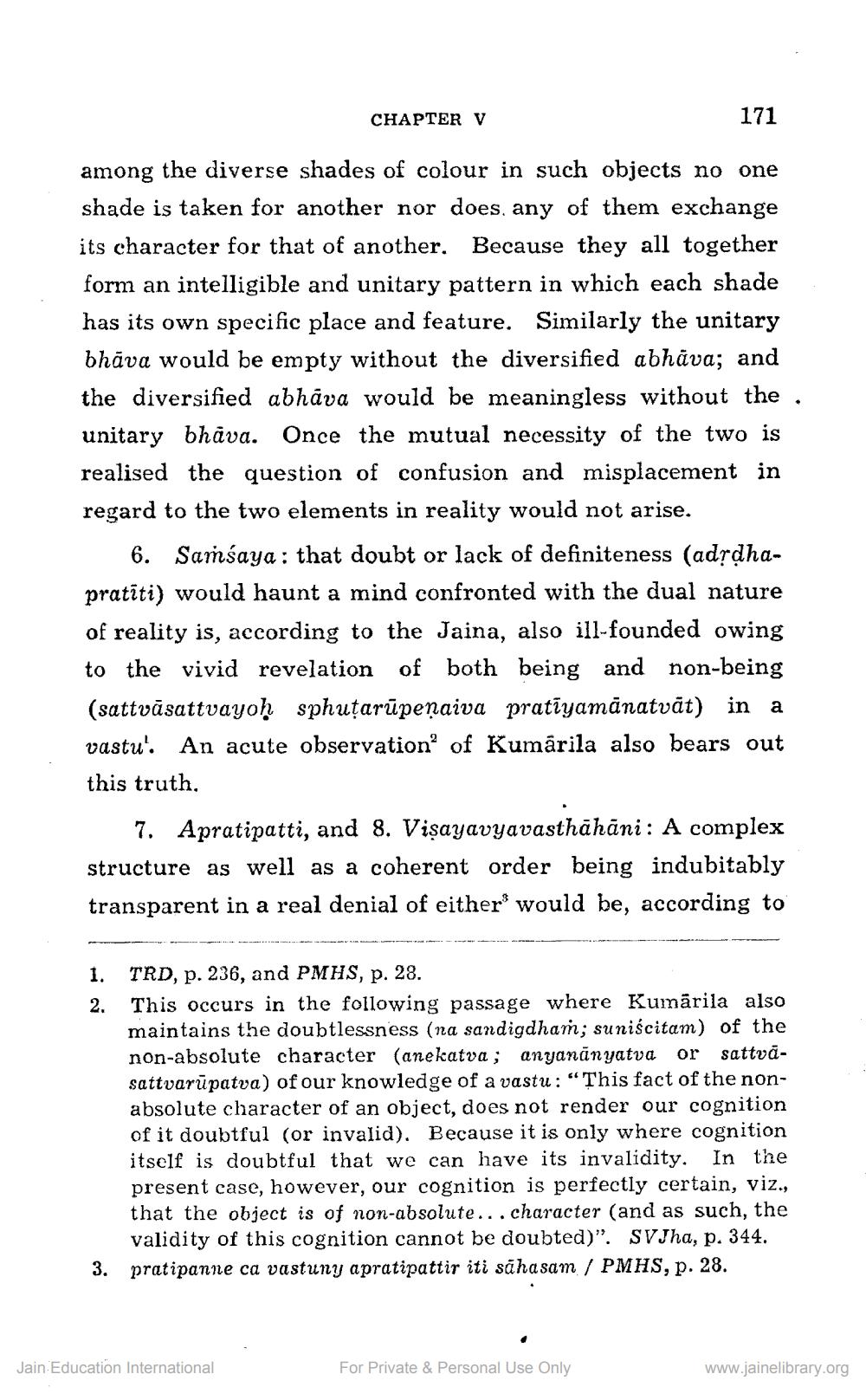________________
CHAPTER V
among the diverse shades of colour in such objects no one shade is taken for another nor does. any of them exchange its character for that of another. Because they all together form an intelligible and unitary pattern in which each shade has its own specific place and feature. Similarly the unitary bhava would be empty without the diversified abhäva; and the diversified abhava would be meaningless without the . unitary bhava. Once the mutual necessity of the two is realised the question of confusion and misplacement in regard to the two elements in reality would not arise.
171
6. Samsaya: that doubt or lack of definiteness (adṛdhapratiti) would haunt a mind confronted with the dual nature of reality is, according to the Jaina, also ill-founded owing to the vivid revelation of both being and non-being (sattvasattvayoḥ sphuṭarupeṇaiva pratiyamānatvāt) in a vastu'. An acute observation of Kumarila also bears out this truth.
7. Apratipatti, and 8. Visayavyavasthāhāni: A complex structure as well as a coherent order being indubitably transparent in a real denial of either would be, according to
Jain Education International
1. TRD, p. 236, and PMHS, p. 28.
2.
This occurs in the following passage where Kumarila also maintains the doubtlessness (na sandigdham; suniścitam) of the non-absolute character (anekatva; anyananyatva or sattvasattvarupatva) of our knowledge of a vastu: "This fact of the nonabsolute character of an object, does not render our cognition of it doubtful (or invalid). Because it is only where cognition itself is doubtful that we can have its invalidity. In the present case, however, our cognition is perfectly certain, viz., that the object is of non-absolute... character (and as such, the validity of this cognition cannot be doubted)". SVJha, p. 344. 3. pratipanne ca vastuny apratipattir iti sahasam/ PMHS, p. 28.
For Private & Personal Use Only
www.jainelibrary.org




